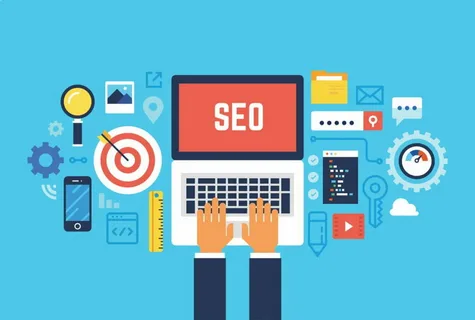
In today’s digital world, visibility is everything. If your business isn’t appearing on search engines like Google, you’re missing out on a huge share of potential customers. That’s where SEO marketing comes in. Search Engine Optimization is one of the most powerful tools for digital growth. It helps businesses appear in front of people actively searching for what they offer—without the need for paid ads.
SEO marketing isn’t a quick fix or a one-time job. It’s a long-term strategy that focuses on improving your website’s relevance, authority, and user experience. When done correctly, it brings steady traffic, builds trust with your audience, and positions your brand as a leader in your industry.
What Is SEO Marketing?
SEO marketing is the practice of optimizing your website and content to rank higher on search engines like Google, Bing, and Yahoo. It involves understanding how search algorithms work, what your audience is searching for, and how to structure your site so that it’s easy to find, read, and navigate.
Unlike paid advertising, SEO doesn’t rely on budgets to stay visible. Once your site starts ranking well, it can continue to attract traffic organically for months or even years. This makes SEO marketing one of the most cost-effective digital strategies available.
How SEO Marketing Works
At its core, SEO focuses on three major pillars: technical optimization, on-page optimization, and off-page optimization. Each plays a role in improving your site’s ranking and performance.
Technical SEO deals with backend elements like website speed, mobile responsiveness, security (HTTPS), and crawlability. If your website isn’t technically sound, search engines may not index your pages properly.
On-page SEO refers to the content and structure of your individual pages. This includes using the right keywords, writing engaging content, optimizing headings and meta descriptions, and making sure internal links are clear and effective.
Off-page SEO focuses on building your website’s authority through backlinks—links from other reputable sites to yours. The more trustworthy links you have pointing to your site, the more search engines see your content as credible and worth ranking higher.
Together, these elements form a comprehensive SEO marketing strategy that boosts your visibility and helps attract the right audience to your Marketing company in Dubai.
Why SEO Marketing Matters
With billions of searches happening every day, being visible on search engines isn’t optional—it’s essential. Most users don’t go past the first page of Google results, so if your website isn’t near the top, you’re likely invisible to your audience.
SEO marketing ensures that your content is optimized to appear for relevant search queries. This means you’re reaching people who are already interested in your products or services. These are warm leads—people with intent—and they’re far more likely to convert into customers.
Another benefit is trust. Websites that appear at the top of search results are often viewed as more credible and reliable. Ranking organically sends a signal that your brand is legitimate and offers value.
SEO vs. Traditional Advertising
Traditional advertising, like TV, radio, or even display ads, relies on interruption. It shows your message to people regardless of whether they’re looking for it. SEO marketing, on the other hand, works on intent. It puts your business in front of people who are actively searching for a solution.
While paid ads offer short-term visibility, SEO provides long-term benefits. Once your website is optimized and ranking well, you can enjoy ongoing traffic without constantly paying for clicks. This makes SEO marketing more sustainable and scalable than most other forms of advertising.
The Role of Content in SEO
Content is at the heart of every successful SEO campaign. High-quality, useful, and engaging content not only helps answer user questions but also keeps them on your site longer. Search engines reward this behavior by ranking your pages higher.
Blog posts, service pages, product descriptions, FAQs, and even video transcripts are all opportunities to target relevant keywords and provide value to your audience. The more helpful your content is, the more likely users are to trust your brand and take action.
An effective SEO marketing strategy includes a consistent content creation plan focused on your target audience’s interests, problems, and search behavior.
Local SEO for Targeted Visibility
If your business serves a specific geographic area, local SEO is a critical part of your strategy. Optimizing your Google Business Profile, collecting reviews, and targeting location-based keywords can help your business appear in local search results and map listings.
This is especially useful for restaurants, medical clinics, real estate agencies, salons, and any business that relies on foot traffic or local clientele. A strong local SEO presence ensures your customers find you when they need you—right in your area.
Measuring SEO Success
One of the advantages of SEO marketing is that every effort is trackable. With the right tools, you can measure key performance indicators such as:
Keyword rankings
Organic traffic volume
Bounce rate and session duration
Conversion rate
Backlink quality and quantity
Page load speed and mobile usability
These metrics help refine your strategy and prove the return on investment over time. By continuously monitoring performance, you can make data-driven decisions that lead to better visibility and more leads.
Final Thoughts
If you want to grow your business in the digital age, investing in SEO marketing is a smart and necessary step. It provides long-term value, builds credibility, and helps you reach people who are already looking for what you offer.
SEO is not about gaming the system—it’s about understanding it. It’s about creating a better website, producing helpful content, and earning trust from both users and search engines. Whether you’re a startup, small business, or enterprise, SEO marketing gives you the tools to compete and thrive online.
By making SEO a central part of your digital strategy, you’re not just increasing traffic—you’re building a stronger, more visible, and more trusted brand.

